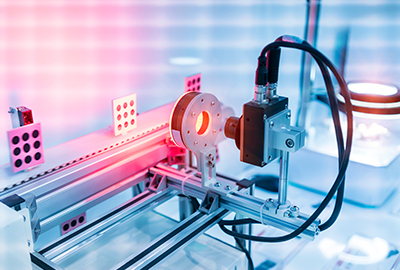 One of the great features of embedded vision is its versatility. There is a wide array of choices for optics, image sensors, and interfaces to fit many applications. But during the selection phase, this blessing of endless options can feel like a curse. Today, we’re going to tackle one of the most crucial choices you have to make when building your embedded vision system. The interface.
One of the great features of embedded vision is its versatility. There is a wide array of choices for optics, image sensors, and interfaces to fit many applications. But during the selection phase, this blessing of endless options can feel like a curse. Today, we’re going to tackle one of the most crucial choices you have to make when building your embedded vision system. The interface.
Core Components of Embedded Vision
Until recent years, giving an automated system the ability to see called for a lot of equipment and cabling. Sometimes a dedicated computer was used for processing. Other systems required a connection back to the main terminal. Cameras would capture an image, send it to the computer for processing, and a robot or other automated device would wait for a command. The computer required custom software for image processing and controlling the automation.
But embedded vision has helped to make automation faster and easier. A logic board can now be mounted on or near a camera. Not only does this reduce the time it takes to process an image, but the compact size and the elimination of extensive cabling lets integrators put embedded vision in more spots throughout the facility and along the production line.
To process the captured image, an interface is required to connect the camera to the processing component. Each standard presents its own price and performance tradeoffs. Comparing the different standards can be confusing. Let’s discuss how you can pick the interface for your application.
Picking an Interface for Embedded Vision
MIPI CSI-2. MIPI CSI-2 (Mobile Industry Processor Interface) is the most widely used embedded vision interface. It was originally designed for mobile devices and the MIPI Camera Working Group updates it every two years. Some other applications that use it include head-mounted VR devices, IoT appliances, and 3D facial recognition security systems. It’s a proven technology that’s here to stay.
MIPI has four image data lanes that are each capable of 1.5 Gb/s, adding up to a high bandwidth of 6 Gb/s and making it faster than USB 3.0. It’s an efficient, reliable protocol that can handle 1080p video and will be usable for 8K and beyond. Its low overhead offers a higher net image bandwidth.
USB 3.0. USB is the current runner-up to MIPI-CSI2. USB 3.0 gave the extremely common USB interface a boost to 5 Gb/s. Since USB is plug-and-play, embedded vision devices with this interface can often be swapped out on the fly, making the replacement of damaged devices easy work.
Choosing USB 3.0 lets you skip out on expensive, drawn-out development times (and costs) for your embedded vision interface. But USB 3.0 can be challenging to deploy in tight spaces. USB connectors are rather large and the standard’s fairly rigid cabling isn’t ideal for some of the more compact embedded vision components.
Want a quality camera for your automation? Find the right camera or sensor for your embedded vision project.
